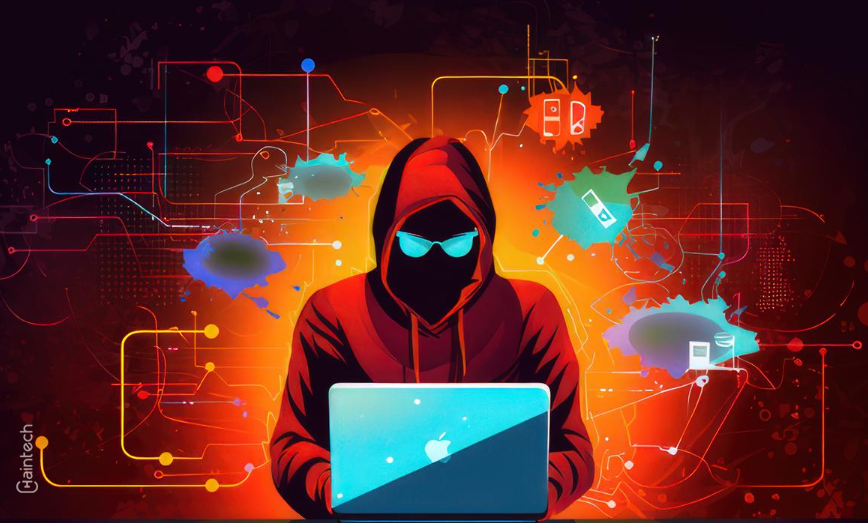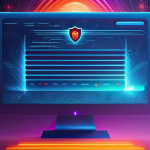The Rise of Cybercrime: Why Identity Management Is More Crucial Than Ever

The rapid growth of technology has brought about numerous benefits, but it has also given rise to a dark side: cybercrime. In this article, we will explore the rising threat of cybercrime and why effective identity management is more crucial than ever before. By understanding the evolution of cybercrime, the motives behind cybercriminal activities, common targets, emerging trends, consequences, strategies and technologies, legal measures, the human element, industry and government initiatives, case studies, and the future landscape of identity management, individuals, businesses, and governments can collectively combat cybercrime and safeguard their digital identities.
The Evolution of Cybercrime
The dawning of the Internet era and the genesis of cybercrime
The advent of the internet opened up a whole new realm of opportunities for individuals and businesses. Unfortunately, it also created opportunities for cybercriminals to exploit vulnerabilities and engage in malicious activities. As technology advanced, so did the tactics employed by cybercriminals.
Shifting tactics: A glimpse into modern cybercriminal strategies
Cybercriminals are continuously evolving, adapting their tactics to stay one step ahead of security measures. From phishing scams to malware attacks, they employ sophisticated techniques to infiltrate systems, steal valuable data, and cause financial and reputational harm.
Exploring the dark web: A breeding ground for cybercriminal activities
The dark web, a hidden part of the internet accessible only through specific software, has become a haven for cybercriminals. It provides a cloak of anonymity, enabling the trade of stolen data, illegal goods, and services. It is vital to understand the dark web’s role in fueling cybercrime to effectively combat this rising threat.
Unveiling the Motives Behind Cybercrime
Financial gains: The primary driver for cybercriminals
The pursuit of financial gain remains a primary motive for cybercriminals. Whether it is through stealing sensitive financial information, conducting ransomware attacks, or defrauding individuals and businesses, monetary rewards continue to drive cybercriminal activities.
Political and social agendas: Uncovering the hidden motives
Cybercrime is not solely driven by financial incentives; political and social motivations also play a significant role. Hacktivist groups aim to disrupt or expose institutions or individuals who they perceive as unjust. State-sponsored cybercriminal activities also seek to undermine rival nations by stealing classified information or disrupting critical infrastructure.
Disruptive powers: Cybercrime as a tool of chaos and destruction
Beyond financial gains and political agendas, cybercriminals utilize their skills to create chaos and disruption. From large-scale attacks aiming to bring down systems and networks to spreading misinformation and sowing discord, cybercriminals can destabilize societies and institutions.
Understanding Identity Management
Defining identity management in the digital realm
Identity management refers to the practice of authenticating and authorizing individuals or entities accessing digital resources. It encompasses processes, technologies, and policies that ensure the right people have access to the right information at the right time while preventing unauthorized access.
Multi-factor authentication: Strengthening the protection against cyber-attacks
To enhance security, multi-factor authentication (MFA) has become a critical component of identity management. MFA requires users to provide multiple pieces of evidence to verify their identity, such as passwords, biometrics, or security tokens. This layered approach adds an extra level of protection against cyber-attacks.
Role of encryption in safeguarding personal information
Encryption plays a crucial role in protecting personal information. By converting data into a coded form that can only be deciphered with an encryption key, cybercriminals cannot easily access or interpret sensitive information, mitigating the risk of data breaches and unauthorized access.
The Gaping Vulnerabilities: Common Cybercrime Targets
Individual users: Unmasking the risks faced by everyday Internet users
Individual internet users find themselves at the forefront of cybercriminal targeting. Attack vectors such as phishing emails, malicious downloads, and social engineering exploit human vulnerabilities, leading to identity theft, financial loss, and privacy breaches.
Corporations and businesses: The big game for cybercriminals
Corporations and businesses are lucrative targets for cybercriminals due to their valuable data, financial resources, and interconnected networks. Successful attacks against businesses can result in crippling financial losses, reputational damage, and breaches of customer trust.
Government entities: The high-stakes battle in the realm of cyber-warfare
Government entities, including intelligence agencies and critical infrastructure, face relentless cyber threats due to their political, military, and economic significance. State-sponsored cyber-attacks pose a significant risk to security, sovereignty, and public welfare.
Emerging Threats: Rising Trends in Cybercrime
Ransomware attacks: Holding data hostage for financial gain
Ransomware attacks encrypt victims’ data and demand a ransom for its release. This form of cybercrime has escalated in recent years, affecting individuals, businesses, and even healthcare systems. Failure to meet these demands can have severe consequences, including permanent data loss or public exposure of sensitive information.
Social engineering: Manipulating human vulnerabilities for cyber intrusion
Social engineering techniques exploit human psychology to manipulate individuals into revealing sensitive information or granting unauthorized access. Techniques such as phishing, pretexting, and baiting prey upon trust, curiosity, or urgency in an online context.
Internet of Things (IoT) vulnerabilities: A new frontier for cyber criminals
The rapid proliferation of interconnected IoT devices presents new opportunities for cybercriminals. Insecure IoT devices, such as smart homes or industrial control systems, can be manipulated to gain unauthorized access, launch DDoS attacks, or compromise sensitive data.
The Aftermath: Devastating Consequences of Cybercrime
Financial losses: Quantifying the staggering impact on individuals and organizations
The financial impact of cybercrime is profound, with billions of dollars lost annually. Whether through direct financial theft, business disruption, or the costs of recovery and reputation management, the consequences of cybercrime can be devastating for individuals and organizations alike.
Breach of privacy: The erosion of personal information security
Cybercrime undermines privacy by compromising personal information. Breaches expose sensitive data, such as social security numbers, credit card details, or medical records, jeopardizing individuals’ financial security and opening doors for identity theft or other malicious activities.
Societal repercussions: Widespread mistrust and fear in the digital age
The prevalence of cybercrime erodes trust in digital systems and platforms. Widespread data breaches and cyber-attacks create fear and skepticism, impacting public confidence in online transactions, social networks, and even government institutions. Restoring trust becomes a complex challenge in the face of these evolving threats.
Effective Identity Management Strategies and Technologies
Password security: The critical foundation of identity protection
Passwords remain the first line of defense in identity management. Strong, unique passwords combined with regular updates and secure storage practices are essential to minimize the risk of unauthorized access.
Biometric authentication: Leveraging unique biological traits for enhanced security
Biometric authentication utilizes individuals’ unique biological traits, such as fingerprints, facial recognition, or iris scans, for identity verification. Biometrics offer enhanced security as these traits are difficult to replicate, providing an added layer of protection against identity theft.
Artificial Intelligence (AI) and machine learning: The future of identity management
AI and machine learning technologies are revolutionizing identity management. These technologies can analyze vast amounts of data, detect anomalous behaviors, and identify potential threats in real-time, enabling proactive defense mechanisms to counter evolving cyber threats.
Legal and Regulatory Measures Against Cybercrime
International cooperation: Collaborative efforts to combat cyber threats
Given the borderless nature of cybercrime, international cooperation is vital. Collaboration between countries, sharing intelligence, and establishing common frameworks enhance the global fight against cyber threats.
Cybersecurity regulations: Establishing legal frameworks to mitigate risks
Governments are implementing cybersecurity regulations to protect individuals, businesses, and critical infrastructures against cybercrime. These regulations outline standards, guidelines, and penalties to ensure organizations take proactive measures to safeguard against cyber threats.
The role of law enforcement and intelligence agencies in cybercrime prevention
Law enforcement and intelligence agencies play a crucial role in preventing and combating cybercrime. By investigating cyber incidents, apprehending cybercriminals, and sharing intelligence, these agencies help safeguard society and bring offenders to justice.
The Human Element: Education and Awareness
Combating cyber ignorance: Fostering digital literacy among individuals
Education and awareness are key to minimizing cyber threats. Promoting digital literacy equips individuals with the necessary knowledge and skills to identify and respond appropriately to cyber risks, reducing the likelihood of falling victim to cybercrime.
Workplace training: Equipping employees with cybersecurity knowledge
Businesses must provide comprehensive cybersecurity training for employees. By educating staff about potential threats, safe online practices, and the importance of reporting suspicious activities, companies can build a proactive defense against cybercriminals.
Parental guidance: Nurturing safe online practices from an early age
Parents and guardians play a vital role in shaping safe online behaviors among children. By teaching responsible internet usage, guiding children on privacy settings, and fostering open communication, they can help protect young users from cyber threats.
Industry and Government-Level Initiatives
Public-private partnerships: A unified front against cyber threat
Public-private partnerships foster collaboration, knowledge sharing, and resource pooling to combat cyber threats effectively. These partnerships bring together government agencies, businesses, and industry experts to strengthen cybersecurity practices and respond to emerging threats collectively.
Cybersecurity certifications and standards: A blueprint for best practices
Certifications and standards provide businesses and individuals with guidelines for implementing robust cybersecurity measures. Certifications, such as the Certified Information Systems Security Professional (CISSP), validate the competence of cybersecurity professionals and promote adherence to industry best practices.
Encouraging innovation: Promoting the development of advanced security solutions
Industry and government initiatives that encourage innovation drive the development of advanced security solutions. By investing in research and development, promoting entrepreneurship, and supporting emerging technologies, organizations can stay ahead of cybercriminals and protect digital identities effectively.
Case Studies: Learning from Notable Cybercrime Incidents
Target Corporation breach: Lessons in vulnerability management
The Target Corporation data breach in 2013 serves as an important case study. It highlighted the importance of vulnerability management, timely threat detection, and proactive incident response measures to mitigate the impact of cyber-attacks.
WannaCry ransomware attack: Highlighting the importance of timely software updates
The widespread WannaCry ransomware attack in 2017 emphasized the criticality of timely software updates and patch management. Vulnerabilities exploited by the attack had been patched months before, underscoring the significance of organizations promptly applying security updates.
Stuxnet: Unveiling the intersection of cybercrime and state-sponsored attacks
Stuxnet, a complex computer worm discovered in 2010, revealed the intersection between cybercrime and state-sponsored attacks. The attack targeted Iran’s nuclear program, demonstrating the potential ramifications of governments engaging in cyber warfare.
The Future of Identity Management in the Face of Cybercrime
Advanced authentication methods: The next line of defense
To stay ahead of cybercriminals, advanced authentication methods, such as behavioral analytics, contextual authentication, and adaptive authentication, are emerging. These methods leverage advanced technologies to establish more accurate and secure identity verification systems.
Artificial intelligence in cybercrime prevention: Opportunities and challenges
Artificial intelligence presents both opportunities and challenges in cybercrime prevention. It can automate threat monitoring, analyze complex data patterns, and predict emerging threats. Simultaneously, there are concerns regarding the potential misuse of AI by cybercriminals to develop more sophisticated attacks.
The continuous struggle: Growing importance of perpetual vigilance
As the threat landscape evolves, perpetual vigilance becomes crucial. Cybercrime prevention requires proactive planning, regular risk assessments, timely updates of security measures, and ongoing training to stay one step ahead of cybercriminals.
Conclusion
Cybercrime poses significant threats to individuals, businesses, and governments. From financial losses to breaches of privacy and societal repercussions, the impact is far-reaching and multi-faceted. Identity management plays a vital role in safeguarding against cyber threats. From multi-factor authentication to encryption and advanced authentication methods, effective identity management strategies and technologies serve as critical defense mechanisms.
Frequently Asked Questions (FAQs)
A. What is cybercrime, and how has it evolved over time?
Cybercrime refers to criminal activities conducted online or through computer networks. It has evolved from basic scams to more sophisticated tactics, exploiting vulnerabilities in technology and human behavior.
B. Why is identity management crucial in safeguarding against cyber threats?
Identity management ensures authorized access to digital resources and protects against unauthorized access, data breaches, and identity theft. It is crucial in mitigating the risks posed by cyber threats.
C. What are the most effective identity management strategies for individuals?
Individuals can enhance their identity management with strong passwords, multi-factor authentication, regular updates of software and devices, and practicing safe online habits, such as avoiding suspicious links or sharing sensitive information.
D. How do businesses and governments combat cybercrime at a larger scale?
Businesses and governments combat cybercrime through a combination of technological solutions, employee training, partnerships, legal frameworks, and intelligence sharing to establish proactive defense systems against cyber threats.
E. What does the future hold for identity management in the face of advancing cyber threats?
The future of identity management lies in advanced authentication methods, such as behavioral analytics and adaptive authentication. Artificial intelligence will also play a significant role in proactive threat detection and prevention. Continual vigilance and adaptation to evolving threats will be paramount.










dssdgsdg